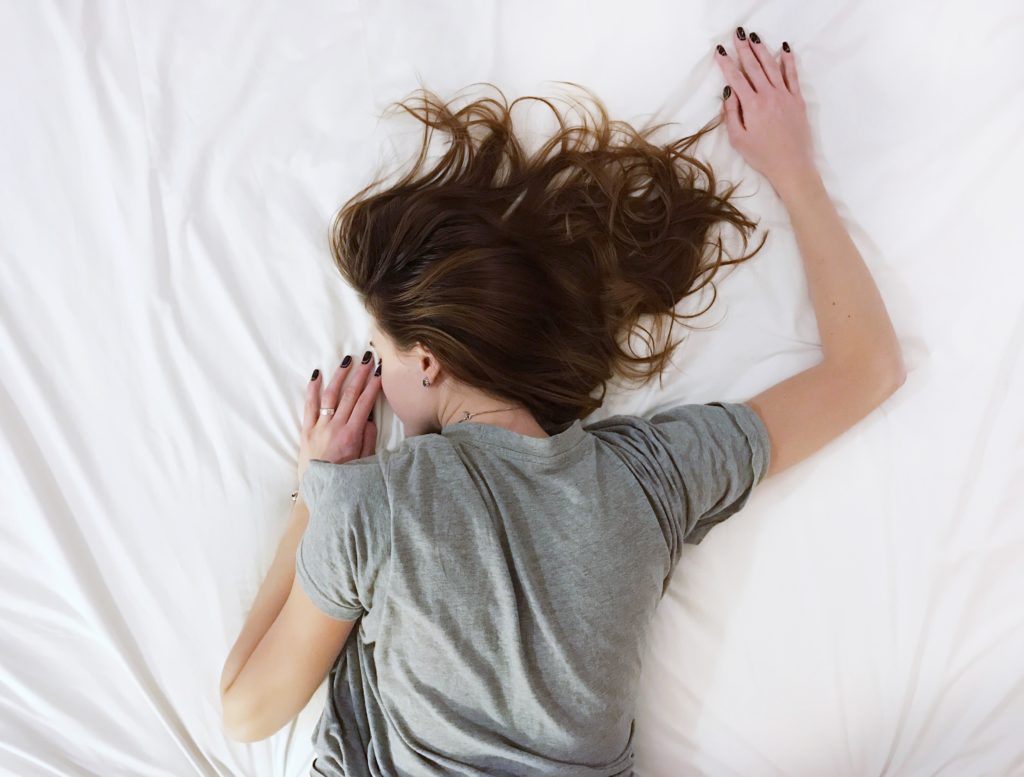Picture this… you walk into a bedroom but find no bed. Instead, you see what looks like a folded cushion on the floor with pillows and a comforter folded in half. You might be wondering where the bed is. Don’t panic, because I can assure you that there is one. This is the scene you’ll find in my own bedroom. My husband and I share a queen-sized organic cotton futon that’s only 3-inches thick. Yes, you read that right—3 inches from the ground.
It wasn’t always like this. Trust me, I loved my thick and soft mattress. But after one too many moves, and the dread that comes along with moving bulky items, I decided it’s time to change. My husband is also Japanese and spent time living in Japan. It was there that he learned to love sleeping on the floor. It’s very common to see Japanese people sleeping on futons that they fold and store away when not in use. So I liked the idea of having a mattress that I could fold to make more room. Plus, we’ve always lived in small quarters with little space. And I missed having space.
What’s a Futon?
Authentic futons aren’t the Westernized ones that we may be used to seeing with a flat foldable mattress on top of a wooden or metal frame. Japanese futons are thin, padded mattresses stuffed with cotton and quilts. Historically they were filled with straw, hemp, and other natural materials. According to historians, the term futon was brought to Japan about 1,000 years ago. The reason these mattresses were so thin was that they were easily able to be folded and stored away during the day. This freed up valuable space in the small Japanese homes.
The futon also consists of several different parts that can be used all together at nighttime. Tatami mats are also used with futons. They consist of traditional mats usually made from rice straw. These mats are placed under futons to provide a bit more cushioning but to also create some airflow.
I was skeptical about altering the way I slept. But my husband swore by it, and I wanted to take his word for it. I did my research and found an authentic company based in San Francisco that handcrafted their futons. This company even offered a “vegan and organic option” as opposed to their wool-filled mattresses. So I bit the bullet and bought the futon.
It took a bit to adjust, and luckily, we were still sleeping on top of the carpet. My body was sore for about a week once we got rid of our old mattress. I had to learn how to get up out of bed every day without falling over from half-open eyelids. Overall, the adjustment period wasn’t hard. I liked the fact that I could sprawl out. There was just something that felt so natural about sleeping on the floor.

Are There Any Health Benefits?
This alternative way of sleeping can promote several health benefits. It is said to improve spinal alignment and blood circulation. Older Japanese people have a very low risk of hip problems, which seem to plague older generations in America. Theories suggest that it’s because of how mobile the Japanese is due to their “floor-culture” lifestyles. It could also be because of habitually sleeping on the floor and strengthening the muscles required for standing from a lying/sitting position.
Sleeping on the ground also facilitates the healing properties of grounding, which is a concept that claims that being more connected with earth (and therefore the ground) decreases the inflammation in our bodies. This is because we as humans have a positive charge, but that charge can build up over time. Connecting to the ground allows the negative charge from the earth to balance out our charges and neutralize any free radical toxins. The electrons from earth act as powerful antioxidants and more research is being done to prove this.
No More Pain
One of the major improvements I noticed from sleeping on a futon was the complete disappearance of my pinched nerve. I had been dealing with this pinched nerve in my left hip that would flare up from time to time. Yoga poses would ease the pain, but it never seemed to go away. It’s been 6 months since this lifestyle shift and I have not had any reoccurrences of that pain! It’s gone—completely.
I also notice I tend to shift sides a lot now, and after researching more, I discovered that moving more in your sleep prevents your body from being sore. It’s when people sleep in one position on a super comfortable and plush mattress all night that their body becomes adjusted to being less aligned. Sleeping on the ground provides the body, especially the spine, with the firmness that is needed to keep the body active enough so as to not fall into misalignment.
Saying Goodbye to Mattresses Forever
Recently I was given a regular mattress by a friend who was moving and I thought I would give it a try again. I said never again after just two nights. Both nights I awoke to bad back pain. I know I am not alone though. Many people suffer from bad backs and maybe the key is in ditching our mattresses. Try taking baby steps to see if sleeping on the floor is possible for you. Take it from me who thought that they could never sleep on the floor. Now it’s just the 3 inches of comfort between me and the hardwood floors. And it’s honestly not uncomfortable. This was one of the best decisions I have made for my overall health. Ultimately, I can’t imagine ever going back.
Get more like this—Sign up for our daily inspirational newsletter for exclusive content!
__
Photo by Vladislav Muslakov on Unsplash




